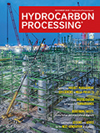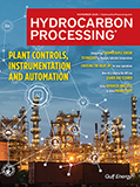Hydrocracking
Technip Energies wins contract from Chevron Phillips Chemical and QatarEnergy for the Golden Triangle Polymers ethane cracker
Technip Energies has been awarded a contract for the supply of proprietary cracking furnaces for the 2 MMtpy ethane cracker for the Golden Triangle Polymers project.
A novel deep catalytic cracking technology for residue-to-chemicals processes
Over the past two decades, annual global demands for refined products and basic petrochemicals have increased by approximately 1.3% and 3.5%, respectively.
History of the HPI: The 2000s: Net-zero, environmental regulations, capacity acceleration and digital transformation
This final installment of the History of the HPI series details major events in the refining and petrochemicals industry over the past 20 yr, including stricter regulations/initiatives to curb carbon emissions, a safer and more environmentally friendly way to produce and handle chemicals, significant capital investments to boost production capacity and digital transformation.
Hydroprocessing catalyst reload and restart best practices—Part 2
Hydroprocessing (hydrotreating and hydrocracking) units are high-pressure, high-temperature units that have multiple reactors, multiple beds per reactor and specialized metallurgy. Catalysts in these units are replaced on a 2 yr–5 yr cycle, depending on feed quality, unit design, catalyst selection, operational constraints and performance.
History of the HPI: The 1980s: Oil spike/collapse, liquid crystals, conducting polymers and the rise of AR/VR
Several major impactful events took place in the global oil and gas and petrochemical industries in the 1980s.
Hydroprocessing catalyst reload and restart best practices—Part 1
Hydroprocessing (hydrotreating and hydrocracking) units are high-pressure, high-temperature units that have multiple reactors, multiple beds per reactor and specialized metallurgy.
Shell and Dow start up E-cracking furnace experimental unit
Shell and Dow have started up an experimental unit to electrically heat steam cracker furnaces at the Energy Transition Campus Amsterdam, The Netherlands.
History of the HPI: The 1970s: Crises, clean air, plastic bottles and the DCS
The 1970s were marked by several historical events that affected not only the hydrocarbon processing industry (HPI) but nations around the world.
Prevent corrosion failures at each stage of design, construction and normal operation
Each year, significant economic losses due to corrosion failures occur in the refining and petrochemical industries; unfortunately, many of these losses could have been prevented.
Xylene-loop scheme for minimized GHG emissions and PX production cost
Molecular management, energy efficiency and carbon dioxide (CO<sub>2</sub>) emissions have become major focuses for petrochemical complexes, including aromatics plants.

- Indian Oil buys first Colombian oil under Ecopetrol contract 12/31
- Ukrainian drone attack sparks fire, damages equipment at Tuapse refinery 12/31
- Chile's $2.5-B Volta green ammonia project wins environmental permit 12/31
- China begins issuing second batch of 2026 crude import quotas to refiners 12/31
- EIA: U.S. crude, fuel inventories rose in the week ended December 19 12/30
- Ghana's Tema oil refinery restarts after 9-yr shutdown 12/30




